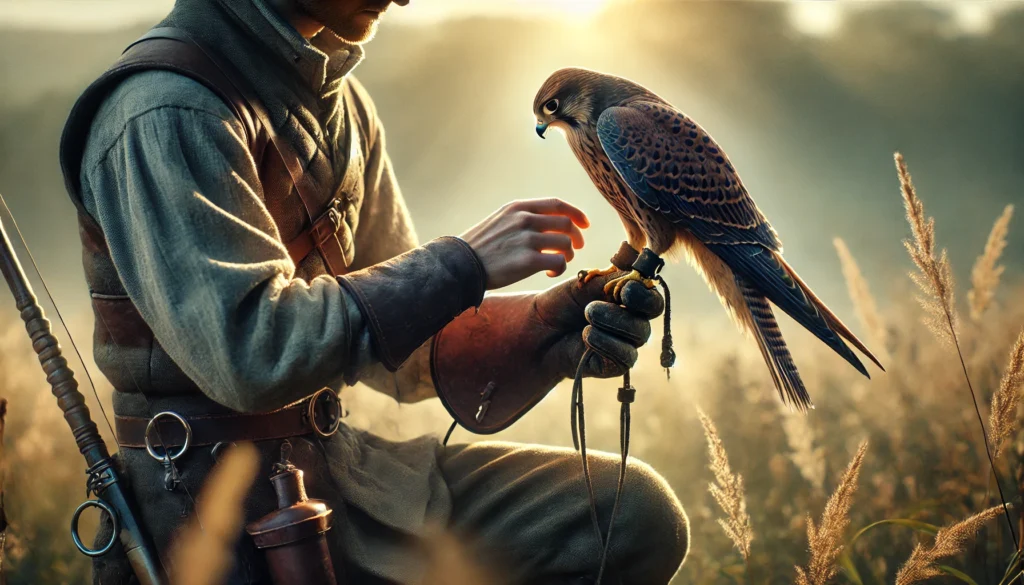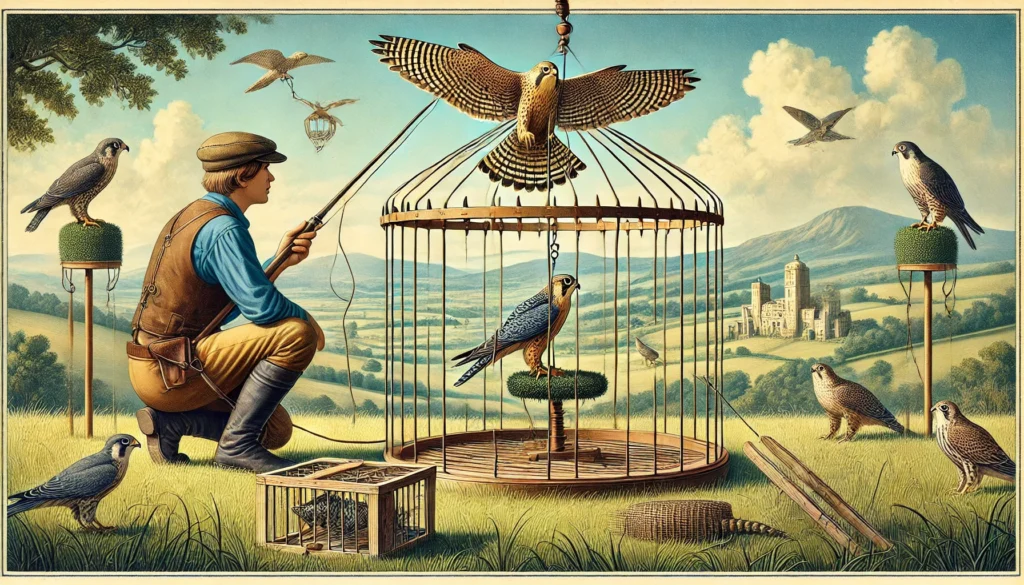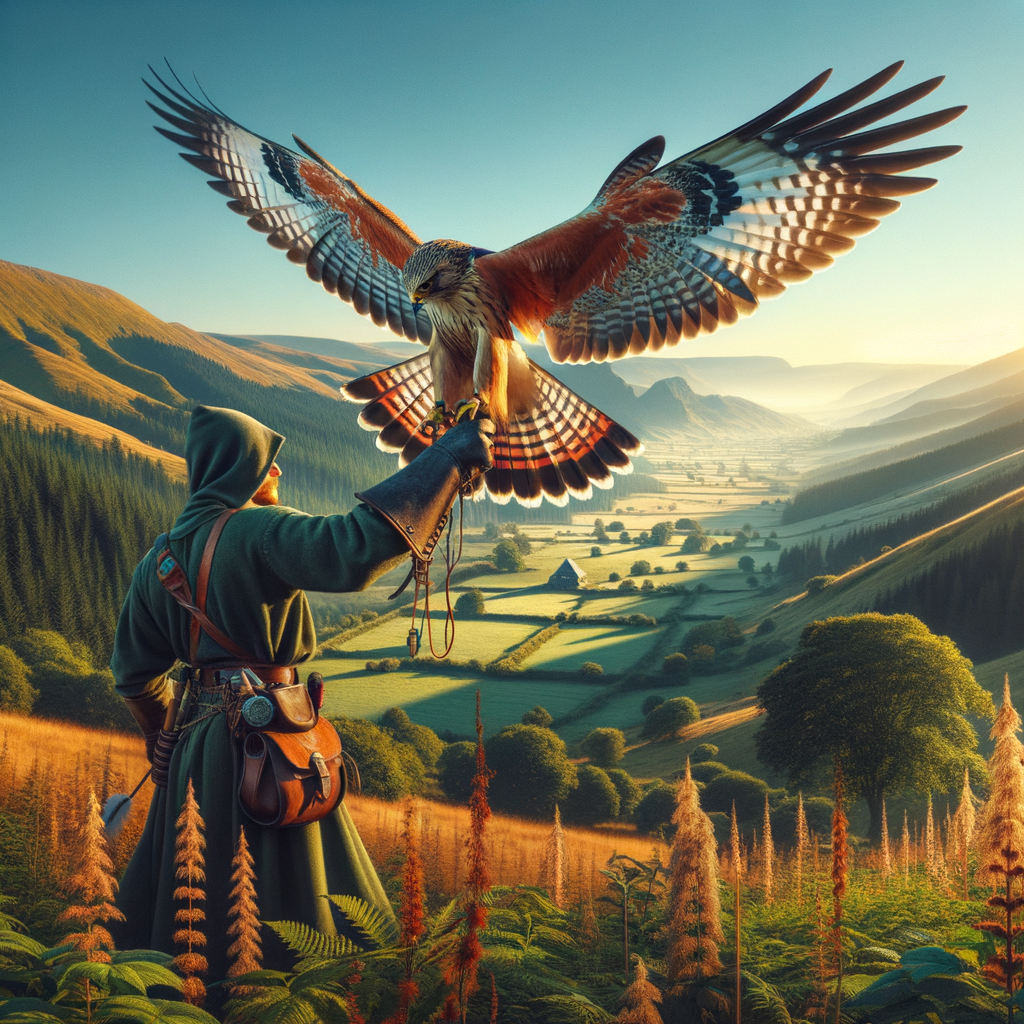Key Lessons on Teaching Falcons to Hunt
- Understanding Falconry Basics: Learn the essential principles of falconry, including the history and traditions that make it a unique and fascinating practice.
- Selecting the Right Falcon: Discover how to choose a falcon that suits your needs and experience level. Learn what makes a good hunting partner.
- Training Techniques: Explore various methods and practices for training your falcon, from basic commands to advanced hunting techniques.
- Health and Safety: Understand the importance of your falcon’s health and safety. Learn how to recognize signs of illness and injury, and how to keep your bird in top condition.
- Habits and Behavior: Gain insight into the behaviors and habits of falcons to better understand their needs and responses during training and hunting.
- Creating a Bond: Learn the steps to build a strong, trusting relationship with your falcon, which is crucial for successful hunting.
- Hunting Skills Practice: Find out how to practice hunting skills in a safe and controlled environment before heading into the wild.
- Legal Considerations: Get informed about the legal aspects of falconry, including permits and regulations that you need to follow.
- Equipment and Gear: Know what essential equipment and gear you will need for both training and hunting with your falcon.
- Ongoing Learning and Improvement: Emphasize the importance of continuous learning and improvement to become a better falconer and ensure the well-being of your hunting partner.
These key lessons provide a solid foundation for anyone interested in the exciting and rewarding pursuit of teaching falcons to hunt.
Mastering the Art of Teaching Falcons to Hunt: An Irish Tale Unfolds
Imagine you’re strolling through the lush, green hills of Ireland, where the wind whispers ancient tales and the sky seems to kiss the earth. Just like an old Irish storyteller, who knows how to capture every listener’s heart with magical words, teaching a falcon to hunt is a captivating dance of patience, skill, and tradition. At Learn Falconry, we’re not just about equipping these majestic birds with hunting skills; we’re about connecting you with the age-old heritage and wisdom that has been passed down through generations.
So, why should you keep reading? Well, let’s draw a comparison. Think of falconry as crafting the perfect Irish stew. Just as a master chef knows exactly how to blend each ingredient to form a mouth-watering dish, a falconer must understand the intricate behaviors and needs of their bird to achieve effective training. It’s not just about tossing a few tips and tricks together; it’s about building trust, understanding nature’s cues, and fostering a bond that’s as wholesome as Grandma’s secret recipe.
In this article, we’ll walk you through the enchanting process of teaching falcons to hunt. We’ll explore the thrilling journey from the first steps of training to the triumphant moments when a falcon takes flight with grace and precision. Trust us, you won’t want to miss out on these age-old secrets that bring together tradition, excitement, and skill in one soaring adventure!
How to Teach Falcons to Hunt: A Step-by-Step Guide
Falconry is an ancient art that combines the beauty of nature with the skill of human training. The goal is to create a partnership between falconers and their falcons, allowing these magnificent birds to hunt effectively. At Learn Falconry, we take you through detailed methods and techniques to get started with hunting training falcons. We believe a well-trained falcon represents a blend of tradition, precision, and the right knowledge.
Understanding Falcon Behavior
Before diving into the training, it’s essential to understand the behavior of falcons. Falcons are birds of prey that rely on their sharp talons and beaks to hunt. They have excellent vision, which allows them to spot their prey from great distances. Understanding these natural instincts is crucial for effective training falcons for hunting.
Read more about different species of falcons and their unique behaviors on our Species of Falcons page.
Basic Training Techniques
Starting with basic training techniques sets the foundation for more advanced falcon hunting techniques. One essential tool in training is the creance, a long line used to control the bird during initial stages. The goal is to build trust and ensure the falcon responds to commands.
Using Falconry Equipment
Proper equipment is vital for the safety and efficiency of both the falcon and the falconer. This includes hoods, gloves, and telemetry devices. Each piece of equipment has a specific role, from protecting the bird’s eyes to tracking its location during flight.
Check out our detailed guide on Falconry Equipment to understand the essentials.
Positive Reinforcement
Positive reinforcement is a proven method in training animals, including falcons. Rewards like food and praise are used to encourage the falcon to repeat desired behaviors. This approach ensures that the bird remains motivated and cooperative.
Learn more about Positive Reinforcement Techniques on our website.
Advanced Hunting Techniques
As your falcon progresses, it’s time to introduce advanced falcon hunting techniques. This includes teaching the bird to hunt specific prey, like rabbits or game birds, and adapting to different hunting environments. Techniques like lure flying can simulate the hunt and prepare your falcon for real-world scenarios.
Discover Advanced Training Methods to further refine your falcon’s skills.
Legal Considerations
Falconry is regulated by various laws to ensure the welfare of the raptors and the environment. It’s important to be aware of these legal aspects before starting your journey in falconry. Understanding the rules regarding licensing, permitted species, and hunting seasons will keep you on the right side of the law.
For more information, visit our page on Legal Aspects of Falconry.
Falcon Health and Nutrition
A healthy falcon is a successful hunter. Nutrition plays a crucial role in maintaining a falcon’s health, providing the energy needed for hunting. Regular check-ups and a balanced diet are essential for keeping your falcon in top condition.
Explore our tips for Falcon Health and Nutrition.
By following these steps and accessing the resources at Learn Falconry, you’ll set a solid foundation for your falcon’s hunting training. Mastering these techniques will not only improve your bird’s hunting abilities but also strengthen the bond between you and your falcon. Dive deeper into hunting training falcons and equip yourself with the necessary knowledge and tools for this incredible journey!
Teaching Falcons to Hunt: Techniques and Regulations
Falconry License and Requirements
| License Type | Requirements | Raptor Limit |
|---|---|---|
| Apprentice | 2 years training under a master/general falconer | 1 |
| General | 2 years as an apprentice | 3 |
| Master | 5 years as a general falconer | 13 |
- License Fee: $40 in New York State.
- License Duration: 5 years.
- License Types: Apprentice, General, and Master.
Falconry Training and Hunting
- Apprentice Falconry: Spend at least 2 years training under a sponsor and can keep only one raptor.
- General Falconry: Requires at least 2 years of experience as an apprentice and allows up to 3 raptors.
- Master Falconry: Requires at least 5 years of experience as a general falconer and allows up to 13 raptors.
- Hunting Seasons: Vary by state and species.
Falconry Facilities and Equipment
- Facilities Requirements: Specific building and material requirements must be met for keeping raptors.
- Equipment Inspection: Equipment must be inspected by the state wildlife agency before use.
Falconry Exams and Licenses
- Falconry Exam: Administered by the state wildlife agency; requires an 80% passing score.
- Exam Dates: Registration deadline of April 10, 2024, for the 2024 exam.
Falconry in Different States
- New York State: Licenses issued by the New York State Department of Environmental Conservation (DEC).
- California: Licenses issued by the California Department of Fish and Wildlife.
- Utah: Permits issued by the Utah Division of Wildlife Resources.
Falconry Hunting Techniques
- False Alarms: Peregrine falcons may provoke prey into flocking early, exhausting them for a later attack.
- Energy Depletion: Early flocking drains prey’s energy, increasing mortality rates by up to 45%.
- Timing: Greatest risk for dunlins is just before and after high tide, with a spike in kills two hours afterward.
- Variation in Skill: Success in hunting may depend on strategy rather than skill.
- Energy Conservation: Prey facing hunger might focus more on foraging, making them more susceptible to attacks.
Generalized Training Techniques
- Larger Falcons: Shorter tails and narrow wings, better for stooping but not forest hunting.
- Smaller Falcons: Narrow wings and longer tails, making them more maneuverable.
Species-Specific Training
| Species | Prey |
|---|---|
| Peregrine Falcons | Ducks, upland game |
| Red-Tailed Hawks | Squirrels, cottontails, jackrabbits |
| Goshawks and Cooper’s Hawks | Cottontails, squirrels, jackrabbits, upland game, ducks |
| Kestrels | Starlings, house sparrows |
Apprenticeship and Licensing
- Apprenticeship: Two years with a red-tailed hawk or an American kestrel.
- Licensing: Pass an exam and have facilities and gear inspected to legally trap wild birds.
Hunting with Dogs
- Dog Breeds: Dachshunds, terriers, sighthounds, and bird dogs are used to hunt small game.
Regulations in 2024
- Proposed take of 10 nestling or fledged peregrine falcons for Montana residents.
- 1 nestling or fledged peregrine falcon for non-residents for the 2024-2025 biennium.
This content provides a comprehensive guide on falconry in 2024, emphasizing the techniques and regulations involved in training falcons for hunting.
Mastering the Art of Falconry Hunting: A 2024 Guide
Falconry, the ancient art of hunting with trained birds of prey, combines the thrill of the chase with a deep partnership between falconer and raptor. In 2024, reaching master falconer status involves various steps, from obtaining necessary licenses to understanding specific training techniques for different bird species. Here are some key takeaways:
One must embark on a journey through different levels: starting as an apprentice, progressing to a general falconer, and finally achieving master status. The rigorous training includes learning how to work with and care for one or more raptors, depending on the experience level.
Training techniques vary significantly among birds. Peregrine falcons use sophisticated strategies, such as setting off false alarms to tire their prey, making them easier to catch. Red-tailed hawks and goshawks are adept at hunting small game like rabbits and squirrels. The techniques require understanding the physical attributes of each bird, which dictate their hunting style and prey.
Aspiring falconers must also comply with specific regulations, such as inspection of their facilities and equipment, and passing a falconry exam. Practical skills are not enough; proper legal compliance ensures both the falconers and the birds are protected.
Falconry remains a dynamic interplay between tradition and methodical training and adheres to evolving regulations designed to preserve both the sport and the raptors. By mastering these elements, today’s falconers can continue to experience the thrill of this unique and rewarding partnership.



